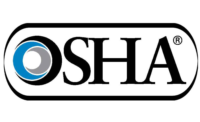U.S. Steel Corp.'s safety shortcuts lead to fatal explosion
Time and cost concerns blamed in 2 worker deaths and serious burns to another

Like most of us, Leo Bridges and Edward Bryant left for work one day in September 2014, probably thinking about some rest and relaxation when the shift ended. Like many, they figured their managers and employer would ensure they were safe at work. Bridges and Bryant were wrong; they were caught in a fiery explosion in the Flux Building, which OSHA inspectors said occurred because U.S. Steel Corp. put workers at risk, so as not to slow production at its Fairfield facility.
The incident
The three men were opening and closing a malfunctioning valve on a furnace at the Fairfield Works when it erupted, and sent Bridges, Bryant and a third co-worker to the hospital. Bridges, 61, and Bryant, 53, died later due to their injuries. The third man was rushed to a burn trauma unit in critical condition. Fairfield Works is comprised of both steelmaking and finishing facilities. The company has headquarters in Pittsburgh and employs more than 40,000 workers.
"Management knew that attempting to operate the valve while the furnace was still running placed workers at risk, yet they allowed them to do it because they didn't want the production line down for hours," said Ramona Morris, OSHA's area director in Birmingham.
The cause
OSHA inspectors determined that the explosion was caused by opening and closing a high-pressure valve that contained oxygen and hydrated lime. The men were doing the work while the furnace was operating, as directed by the department's management.
"Management knew that attempting to operate the valve while the furnace was still running placed workers at risk, yet they allowed them to do it because they didn't want the production line down for hours," said Ramona Morris, OSHA's area director in Birmingham. "This employer chose productivity over the safety of its workers, and two people died as a result of this decision."
The violations
OSHA issued the employer a willful citation for not developing and using a procedure to control the hazardous energy to allow workers to operate the valves on the furnace while it is in operation. A willful violation is one committed with intentional, knowing or voluntary disregard for the law's requirement, or with plain indifference to worker safety and health.
Seven serious citations were issued for not developing a procedure to prevent the furnace from releasing hazardous energy while workers performed maintenance; missing exit signs; an improperly installed exit gate; and not training workers to recognize hazardous conditions with the oxygen system. A serious violation occurs when there is substantial probability that death or serious physical harm could result from a hazard about which the employer knew or should have known.
View the current citations at: https://www.osha.gov/ooc/citations/UnitedStatesSteelCorporation_996555_0320_15.pdf
U.S. Steel Corp. has been inspected 14 times by OSHA since 2009 and issued citations for amputation hazards, unsafe crane operation, violations associated with flammable liquids and other hazards. The company has 15 business days from receipt of its citations and proposed penalties to comply, request a conference with OSHA's area director, or contest the findings before the independent Occupational Safety and Health Review Commission. Proposed penalties total $107,900.
OSHA proposes that U.S. Steel Corp. be placed in the Severe Violator Enforcement Program for demonstrating indifference to its OSH Act obligations to provide a safe and healthful workplace for employees.
Source: OSHA
Looking for a reprint of this article?
From high-res PDFs to custom plaques, order your copy today!







